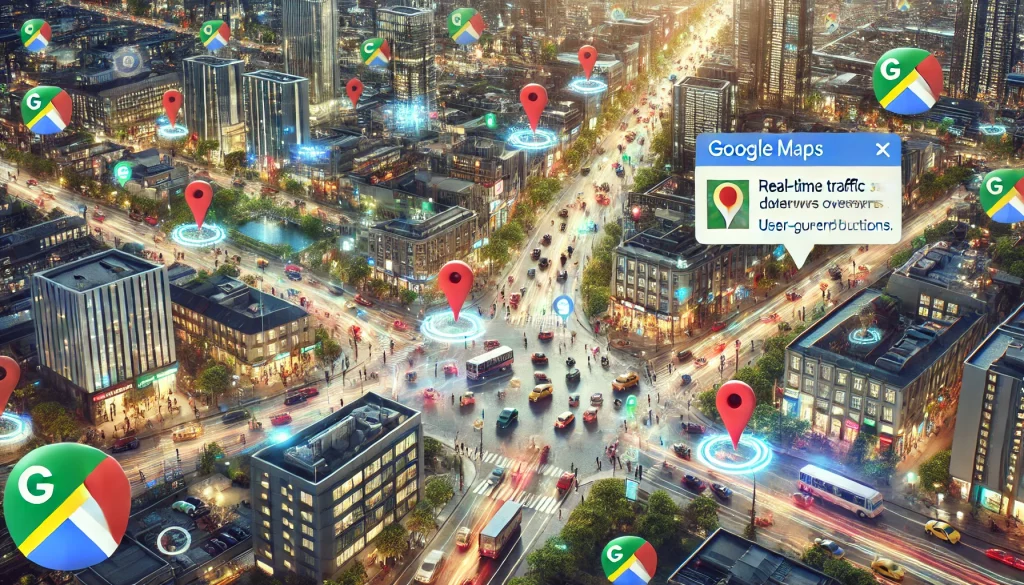Introduction
Contents
In today’s fast-paced world, Google Maps has become an indispensable tool for millions. From daily commutes to adventurous road trips, this navigation app guides us through our journeys with impressive accuracy. But have you ever wondered, how often does Google Maps update? Whether it’s new roads, updated business locations, or real-time traffic data, understanding how Google Maps keeps its information current can be fascinating and incredibly useful. In this article, we’ll dive into the intricate processes behind Google Maps’ updates and reveal why staying informed about these changes is crucial for both users and businesses.
The Magic Behind Google Maps Updates
Google Maps isn’t just a static map; it’s a dynamic and continuously evolving platform. The frequency of updates on Google Maps depends on various factors, from satellite imagery and user contributions to business data and local government records. Let’s break down these components to understand how often Google Maps updates.
Satellite Imagery: A Bird’s Eye View
One of the most significant sources of updates for Google Maps is satellite imagery. These images provide a detailed view of the earth’s surface, capturing changes in landscape, infrastructure, and natural features. Google collaborates with several satellite imagery providers to get the latest data, but due to the vastness of the earth, it’s impossible to update every location at once. Typically, satellite images are refreshed every one to three years, though high-traffic areas like major cities might see updates more frequently.
User Contributions: Harnessing the Power of the Community
Did you know that you, as a user, play a vital role in updating Google Maps? Every time you suggest a change, add a photo, or leave a review, you contribute to the platform’s accuracy. Google’s Local Guides program encourages users to share their knowledge about local places, leading to continuous updates. These user-generated updates are particularly crucial for maintaining current information on businesses, landmarks, and temporary changes.
Business Data: Keeping Up with the Commercial World
Businesses are dynamic, with openings, closures, and relocations happening frequently. Google partners with business data providers and directly with business owners through the Google My Business platform to keep this information accurate. Changes submitted by businesses can reflect almost immediately on the map, especially if they are verified by Google. This means business-related updates on Google Maps can be incredibly frequent and real-time.
One of the most impressive features of Google Maps is its real-time traffic updates. Using data from mobile devices, sensors, and even traffic cameras, Google Maps can update traffic conditions and suggest alternative routes in real-time. This data is refreshed every few minutes, providing users with up-to-the-minute information to make their journeys smoother and quicker.
Government sources also play a crucial role in updating Google Maps. Local municipalities provide information on road closures, construction, and new developments, ensuring that the map reflects the latest changes. These updates can vary in frequency depending on the area and the availability of data from local authorities.
How to Stay Informed About Google Maps Updates
Given the varying frequencies of updates, it’s essential to know how to stay informed about the latest changes on Google Maps. Here are some tips:
Checking Update History
Google Maps does not publicly share a detailed log of every update, but some major changes, such as new satellite imagery, might be announced on Google’s official blog or through media coverage. Keeping an eye on these sources can give you a glimpse into recent updates.
Using Google My Business
For business owners, Google My Business is a powerful tool. By regularly updating your business information and checking for changes, you can ensure that your customers see the most accurate details. This is especially important for businesses that rely on foot traffic or those that experience frequent changes.
Contributing as a User
As a user, you can actively contribute to the accuracy of Google Maps. If you notice an outdated address, a missing road, or incorrect business hours, you can suggest an edit directly on the map. These contributions help keep the map up-to-date for everyone.
The Importance of Regular Updates
Staying updated with Google Maps isn’t just a convenience; it’s a necessity. For users, having the most current information means safer and more efficient travels. For businesses, it means being visible and accessible to potential customers. Understanding how often Google Maps updates can help you appreciate the platform’s complexity and the value it brings to our daily lives.
Conclusion
Google Maps is more than just a navigation tool; it’s a living, breathing platform that evolves with the world around us. The frequency of updates on Google Maps varies from real-time traffic changes to annual satellite imagery refreshes, but the goal remains the same: to provide accurate, reliable, and up-to-date information for its users. Whether you’re a traveler seeking the best route or a business owner aiming to attract customers, staying informed about how often Google Maps updates can make a significant difference.



